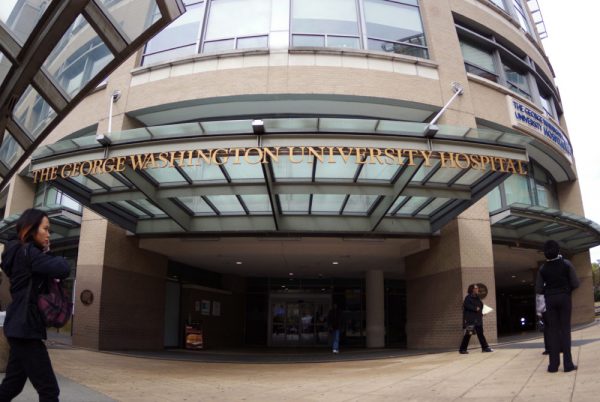The GW Hospital is the first in the United States to use technology that will project computerized scans of patients in surgical procedures.
The hospital announced last week a partnership with health care imaging company Novarad to implement the OpenSight Augmented Reality System, a technology that overlays a 3D image of a patient’s body onto the patient to enhance surgical accuracy. Doctors who have used the technology said the augmented reality system will reduce operation time and increase patients’ safety during surgery.
Babak Sarani, the hospital’s director of trauma and acute care surgery and a professor of surgery and emergency medicine, said doctors currently only use the software for surgery on rib fractures.
Sarani said doctors wear a Microsoft HoloLens headset, which powers OpenSight, to view a computed tomography or a magnetic resonance imaging scan on the patient. The doctor can then determine where to operate to minimize the size of an incision, increase the procedure’s safety and improve patient recovery, he said.
“The technology allows us to project a patient’s actual imaging onto their body so that the surgeon has a precise indication of where to make the incision,” Sarani said. “This increases accuracy and decreases the size of incisions thereby improving overall safety and time required to carry out the procedure.”
He said the technology could be used in fields like neurosurgery and neuroradiology in the future.
“As an academic medical center, we are committed to advancing our care and a large component of our mission is bringing the latest technology to our patients,” Sarani said in an email.
Steve Cvetko, the head of the advanced research and development department at Novarad and a co-creator of OpenSight, said he designed the software to restore doctors’ focus on patients in the medical imaging field. He said doctors who perform CT and MRI scans – procedures performed in a machine – often cannot form a personal relationship with patients because they conduct procedures from behind a screen instead of next to the patient.
“Often, doctors look at these images and make decisions that have serious consequences, and they never meet the patient, never see the patient,” Cvetko said. “I came up with this idea of if you were looking at the images on the patient, that it puts that patient back in the center of focus.”
He said he developed the prototype in his basement before pitching it to Novarad, a medical technology business. Cvetko added that augmented reality technology could potentially help doctors overlay more information on the patient, like the patient’s medical history and allergies.
“Up until now, all the patient information has been separated from the patient, and it seems to be kind of getting worse – not only the images on a computer screen where the doctor has to look away from the patient, but doctors often have tablets or other things,” he said.
Cvetko said he has worked with Sarani for more than a year to develop the technology to get FDA approval, which they obtained in November. He said Sarani, who has been a “pioneer” in OpenSight technology, conducted his first surgery using the software earlier this year.
Sarani first used general medical devices to repair broken ribs, then conducted the same procedure using the new augmented reality software, Cvetko said. He said Sarani wanted to determine if the new software could more accurately detect the rib fracture than older devices.
Cvetko added that augmented reality technology helps eliminate surgical mistakes, and he hopes to expand the software to other procedures and hospitals.
“It’s almost like you’re Superman,” Cvetko said. “You have X-ray vision, you can see through the patient, you can see their bones. I would think that would be a useful tool for any surgeon. If he’s getting ready to operate, he can put this on and see what it is he’s about ready to do, even if it’s something where he’s confident where it is.”
This article appeared in the September 19, 2019 issue of the Hatchet.







